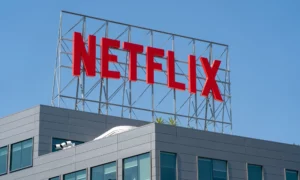Welcome sports enthusiasts! Have you ever wondered how ESPN, the reigning champion of sports broadcasting, remains at the top in today’s fiercely competitive media landscape? Well, get ready to dive deep into a thrilling analysis as we scrutinize three major contenders locked in an enthralling showdown for viewership supremacy. Join us as we shine a spotlight on FOX, CBS, and NBC – these powerhouses are stepping up their game to challenge ESPN’s dominance. From innovative strategies to intriguing partnerships and cutting-edge content offerings, this examination will unveil what makes each player unique while deciphering who could potentially claim victory in this high-stakes battle for your attention. So grab your popcorn and settle into the front-row seat; it’s time to explore the exhilarating world of sports broadcasting like never before!
Introduction to ESPN and its prominence in the sports media industry
Introduction: ESPN, also known as the Entertainment and Sports Programming Network, is a leading sports media company headquartered in Bristol, Connecticut. Founded in 1979 by Bill Rasmussen, ESPN has become one of the most recognizable brands in the world of sports media. The network has established itself as an unrivaled leader in providing comprehensive coverage and analysis of all major sports events and leagues.
ESPN’s Prominence in the Sports Media Industry: Since its inception, ESPN has grown exponentially to become a dominant force in the global sports media landscape. The network’s success can be attributed to its diverse content offerings, innovative approach to broadcasting and strong partnerships with major sports leagues.
Extensive Coverage: One of the key factors that sets ESPN apart from other networks is its unparalleled coverage of sporting events. The company offers a wide range of programming aimed at satisfying every type of sports fan – from traditional televised games to streaming online content and podcasts. With rights to broadcast some of the biggest sporting events including the NFL, NBA, MLB, NHL and NCAA tournaments, it’s no surprise that ESPN is often considered as the go-to destination for breaking news, highlights and commentary on all things related to sports.
Innovative Production Techniques: ESPN has always been at the forefront when it comes to utilizing cutting-edge technology for broadcasting purposes. The network revolutionized how live games are viewed by introducing “gameday” experiences such as multiple camera angles and stats tracking features through their “ESPN+ platform”.
Overview of the competitive landscape: FOX, CBS, and NBC
The television industry is incredibly competitive, and the world of sports broadcasting is no exception. With various networks vying for viewership and advertising revenue, it’s important to understand the current state of the competitive landscape in order to assess each network’s position. In this section, we will take a closer look at three major competitors of ESPN: FOX, CBS, and NBC.
FOX:
FOX has been a major player in the sports broadcasting industry since its launch in 1986. However, their focus on primarily football content has set them apart from other networks. They are known for airing NFL games through their Sunday afternoon NFC package and their Thursday Night Football coverage. In addition to football, FOX also airs Major League Baseball (MLB) games and NASCAR races.
One notable aspect of FOX’s strategy is their emphasis on live sports programming. The network has made significant investments in securing exclusive rights to big events like Super Bowl, World Cup soccer matches, as well as expanding into other popular sports such as golf with the acquisition of USGA championships.
CBS:
CBS Sports is another major competitor in the world of sports broadcasting. While CBS does have some overlap with FOX’s coverage – such as NFL games on Sundays – they also offer distinct programming.
One area where CBS stands out is with their NCAA basketball tournament coverage. Dubbed “March Madness”, the annual event draws millions of viewers every year and generates large advertisement revenues for the network.
Comparison of key factors like programming, viewership, revenue, and market share
When it comes to the competitive landscape of sports media, there are several key factors that play a crucial role in determining the success of a network. These include programming, viewership, revenue, and market share. In this section, we will analyze each of these factors for ESPN and its main competitors – FOX, CBS, and NBC.
Programming:
One of the most significant factors in determining the popularity and success of a sports network is its programming content. ESPN dominates in this aspect with its extensive coverage of various sporting events such as NFL games, NBA playoffs, MLB World Series, tennis grand slams, and many more. It also has exclusive broadcasting rights for major events like the College Football Playoff and the WNBA.
FOX also boasts an impressive lineup of programming with its coverage of popular leagues like NFL and MLB. It has also invested heavily in purchasing broadcasting rights for global events like FIFA World Cup and UEFA Champions League.
On the other hand, CBS primarily focuses on college sports with its flagship show “College GameDay”. It also has the rights to broadcast SEC football games which have a massive fan following.
NBC’s main focus is on horse racing with its widely watched Kentucky Derby coverage. However, it does not have as diverse or extensive programming compared to ESPN or FOX.
Viewership:
In terms of viewership ratings amongst these networks, ESPN still holds a dominant position despite facing some decline in recent years due to cord-cutting trends. With an average daily audience reach of over 20 million viewers , ESPN remains the most-watched sports network in the US.
FOX and CBS follow with an average daily audience of around 10 million and 8 million viewers, respectively. NBC has the smallest average daily audience amongst these networks with around 6 million viewers.
Revenue:
Revenue is another crucial factor that determines the success of a sports network. In terms of revenue, ESPN still holds a significant lead over its competitors. In 2019, ESPN generated around $11 billion in revenue, dwarfing Fox’s $3.7 billion and CBS’ $2.7 billion.
However, FOX’s focus on rights deals for lucrative events like the NFL and FIFA World Cup has helped it close the gap with ESPN, as seen from its consistent growth in recent years.
Market Share:
When it comes to market share, ESPN holds a dominating position with over 90% share of the total sports TV market in the US. Its dominance is driven by its strong programming lineup and extensive reach through various platforms like cable TV and streaming services like ESPN+.
FOX holds around 5% share of the market, mainly due to its successful primetime programming. CBS follows closely behind FOX with a similar market share.
Analysis of ESPN’s strengths and weaknesses in comparison to its competitors
ESPN is undoubtedly one of the most well-known and influential sports networks in the world. It has dominated the market for decades, providing viewers with a wide range of sports content, in-depth analysis, and up-to-date news coverage. However, like any other company operating in a competitive landscape, ESPN also faces stiff competition from other major players in the industry such as FOX, CBS, and NBC. In this section, we will analyze ESPN’s strengths and weaknesses in comparison to its competitors.
Strengths:
1. Wide Reach and Audience Engagement: One of ESPN’s biggest strengths is its vast reach and ability to engage with a global audience. With multiple channels across various platforms such as TV, radio, online streaming services like ESPN+ and social media platforms like Twitter and Instagram, ESPN has been able to capture a loyal fan base both domestically and internationally.
2. Strong Brand Identity: The “Worldwide Leader in Sports” tagline speaks volumes about the brand identity of ESPN. It is recognized worldwide as a top source for all things sports-related. This strong brand image gives them an edge over their competitors when it comes to attracting sponsors and partnerships.
Changes in the industry and the impact on ESPN’s position in the competitive landscape
As with any industry, the sports broadcasting landscape is constantly evolving and ESPN is no exception. Over the years, there have been several changes in the industry that have had a significant impact on ESPN’s position in the competitive landscape.
One major change that has affected ESPN is the rise of digital media and streaming services. With the growing popularity of cord-cutting, more and more viewers are turning to online streaming platforms to watch their favorite sports content. This shift in consumer behavior has posed a challenge for traditional cable networks like ESPN, which rely heavily on subscription fees from cable providers for revenue. As a result, ESPN has had to adapt by launching its own streaming service, ESPN+, and investing in digital content production.
Additionally, the dominance of social media has also played a role in changing the game for sports broadcasters. Platforms like Twitter and Instagram have become go-to destinations for sports fans to get breaking news, highlights, and real-time updates. This has created new opportunities for sports broadcasting companies to reach audiences through social media partnerships and advertising.
Another significant change in the industry is the increase in competition from other networks and platforms. In recent years, major broadcasting companies like FOX, CBS, NBC have started investing heavily in acquiring rights to popular sporting events such as NFL games and major league championships. This increased competition has made it more challenging for ESPN to secure exclusive broadcast rights at reasonable prices.
Strategies employed by ESPN to maintain its dominance
The dominance of ESPN in the sports media industry is undisputed, with over 83 million subscribers and revenue reaching billions of dollars. While many factors contribute to its success, it takes strategic planning and execution to maintain this dominant position in such a competitive landscape. In this section, we will dive into the various strategies employed by ESPN to stay ahead of its competitors.
1. Diversified Content Offerings:
One key strategy that has helped ESPN maintain its dominance is its diversified content offerings. The network has established itself as a one-stop-shop for all things sports-related, from live games and highlights to original programming and informative shows. This wide range of content attracts different types of audiences, from hardcore sports fans to casual viewers, thus increasing their reach and popularity.
2. Investment in Broadcasting Rights:
Another significant factor contributing to ESPN’s domination is its investments in broadcasting rights for major sporting events across different leagues. It holds exclusive broadcast deals with some of the most popular leagues like the NFL, NBA, MLB, and NCAA, giving them an edge over their competitors who may not have access to these events. By securing rights to premium content, ESPN can attract a large audience base and command higher advertising rates.
3. Embracing Digital Media:
ESPN was quick to recognize the growth potential of digital media early on and started creating online platforms for viewership outside traditional television channels. The network now offers digital streaming services like ESPN+ that cater specifically to cord-cutters who prefer consuming sports content online rather than through cable or satellite TV. This approach has helped them stay relevant and reach a new generation of viewers.
4. High-Quality Production:
One of the reasons viewers tune in to ESPN is the high-quality production value of their programs. The network invests heavily in top-notch production equipment and employs experienced producers, directors, and on-air personalities to ensure that their content is engaging and visually appealing to viewers.
5. Partnerships and Collaborations:
ESPN leverages its brand equity by forming partnerships and collaborations with other major sports networks, leagues, teams, and players. For example, it has an agreement with The Walt Disney Company (its parent company) to distribute content across various platforms like ABC, Disney Channel, etc., to widen its reach. It also collaborates with professional leagues and teams to produce exclusive content featuring their athletes.
6. Emphasis on Innovation and Technology:
ESPN continuously innovates its services by introducing new technologies such as virtual reality broadcasting and integrating cutting-edge data analytics into their coverage of events. Additionally, they regularly upgrade their mobile app and website for a seamless user experience.
Future predictions and potential challenges for ESPN’s competitive standing
1. Shift towards digital streaming services: One of the biggest predictions for the future of ESPN’s competitive landscape is a shift towards digital streaming services. With the rise of platforms like Netflix, Hulu, and Amazon Prime, more and more viewers are cutting their cable cords in favor of online streaming options. This trend is also seen in the sports industry with the emergence of dedicated sports streaming services like DAZN and FloSports. In order to stay competitive, ESPN will need to ramp up its efforts in this space and potentially launch its own streaming service or partner with an existing one.
2. Increase in sports media rights fees: As live sports continue to be a highly sought after commodity, there has been a steady increase in media rights fees paid by networks to broadcast sporting events. This trend is expected to continue in the future with major leagues like NFL, NBA, and MLB commanding top dollar for their broadcasting rights. While ESPN has historically been able to afford these fees due to its strong advertising revenue, any potential stagnation or decrease in ad revenue could pose a challenge for ESPN’s competitive standing.
3. Growing competition from social media platforms: Social media platforms have increasingly become popular destinations for sports fans to consume news, highlights, and game updates. Facebook’s partnership with Fox Sports for UEFA Champions League coverage and Twitter’s agreement with NFL for Thursday Night Football are just a few examples that indicate how social media giants are encroaching on traditional broadcasters’ territory. With their massive user bases and advanced technology, social media platforms have the potential to disrupt the traditional sports media landscape and pose a challenge for ESPN.
4. Decline in cable subscriptions: Another potential challenge for ESPN’s competitive standing is the decline in cable subscriptions. With the rise of cord-cutting, more and more viewers are opting out of expensive cable packages, which could result in a decrease in revenue for traditional broadcasters like ESPN. This could make it difficult for ESPN to continue paying high fees for broadcasting rights and maintaining its status as the go-to destination for live sports coverage.
5. Changing consumer preferences: The way people consume media is constantly evolving, and this will continue to impact ESPN’s competitive standing in the future. As younger generations grow up with access to an abundance of media options, their preferences may not align with traditional sports broadcasting models. In order to stay ahead of the curve, ESPN will need to adapt and innovate, potentially by incorporating new forms of content delivery or fan engagement strategies.
Insider
When it comes to the world of sports media, ESPN is often seen as the top dog. With its extensive coverage and exclusive broadcasting rights, it has dominated the industry for decades. However, in recent years, other networks have stepped up their game and are giving ESPN a run for its money. In this section, we will take a deep dive into the insider perspective of how FOX, CBS, and NBC are competing with ESPN.
FOX is one of the major players in sports media with its flagship channel Fox Sports 1 (FS1). This network was launched in 2013 with the goal of challenging ESPN’s dominance in sports broadcasting. Since then, they have secured partnerships with major sporting leagues such as NFL, MLB, NASCAR, and UFC. This move has allowed them to air popular shows like “Undisputed” with Skip Bayless and Shannon Sharpe and “Speak for Yourself” featuring Colin Cowherd and Jason Whitlock.
Another key factor in FOX’s competitive landscape strategy is their emphasis on live events. While ESPN focuses more on pre-game analysis and highlights shows, FS1 puts an emphasis on live games and events coverage. For example, they have secured rights to marquee soccer tournaments such as FIFA World Cup and UEFA Champions League which attract a global audience.
CBS also poses a significant threat to ESPN’s dominance in sports media. As one of the oldest broadcast networks in America, CBS knows how to cater to a diverse audience effectively.



































